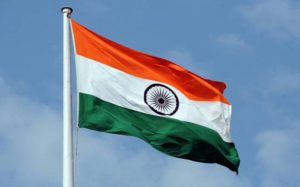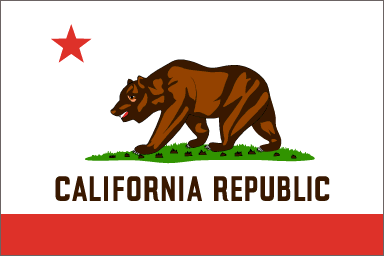By Devanik Saha
As California, the US’ richest state, recently overtook France and Brazil to become the world’s sixth largest economy, according to a Bloomberg analysis, a comparison with India reveals that California has three per cent of India’s population but a gross domestic product (GDP) 125 per cent larger.
California, a powerhouse of innovation and technology, has 39 million people; less than Odisha which has a population of 41 million. Texas follows California with a GDP of $1.58 trillion (Rs 105 lakh crore) – 79 percent of India’s current GDP with 2.1 per cent of its population.
 This data offers some perspective as India’s economy – ranked eighth in 2015 with a GDP of $2 trillion (Rs 134 lakh crore) – is projected to climb past Brazil, the United Kingdom, France, Germany and Japan and become the world’s third-largest in 2030 with a GDP of $7.3 trillion (Rs 489 lakh crore), according to an IndiaSpend analysis of 2015 US government data.
This data offers some perspective as India’s economy – ranked eighth in 2015 with a GDP of $2 trillion (Rs 134 lakh crore) – is projected to climb past Brazil, the United Kingdom, France, Germany and Japan and become the world’s third-largest in 2030 with a GDP of $7.3 trillion (Rs 489 lakh crore), according to an IndiaSpend analysis of 2015 US government data.
Over these 15 years, China’s GDP is projected to double to $18.8 trillion (Rs 1,260 lakh crore) – more than twice its current size – helping narrow the gap with the US, whose GDP in 2030 should be $23.8 trillion (Rs 1,595 lakh crore), according to the US projection.
The US economy made up a quarter of the global economy in 2006, 23 per cent in 2015, and will be a fifth by 2030. India’s GDP share in the world will almost double from 3.18 per cent in 2015 to 6.21 per cent in 2030.
 The Indian economy will more than double to $5 trillion in a “matter of few years”, said Finance Minister Arun Jaitley in June 2016, as the government steps on its reforms agenda to accelerate growth.
The Indian economy will more than double to $5 trillion in a “matter of few years”, said Finance Minister Arun Jaitley in June 2016, as the government steps on its reforms agenda to accelerate growth.
The US projection said India will cross the $5 trillion mark in 2025.
To illustrate the size and power of the US economy, we compared India’s GDP to the GDP of individual US states, factoring in their population, to indicate the magnitude by which India lags the US in wealth and productivity. That lag also indicates the potential for India’s future growth-if that potential is realised.
The GDP Of Maharashtra, India’s richest state = GDP of Connecticut, 23rd-richest US state
With a GDP of $2.5 trillion (Rs 168,000 crore), California – also the most populous state – created the most jobs of any state in the US in 2015, more than the second and third-most-populous states, Florida and Texas, combined. Four of the world’s 10 largest companies are based in California.
With far fewer people, US states have economies that are not just richer but more productive than those of Indian states.
With a GDP of $0.26 trillion (Rs 18 lakh crore), Maharashtra is India’s richest state, followed by Tamil Nadu ($0.17 trillion, Rs 11.2 lakh crore) and Uttar Pradesh ($0.16 trillion, Rs 10.4 lakh crore).
Maharashtra’s GDP almost equals that of Connecticut ($0.26 trillion), ranked 23rd in the US by GDP. Maharashtra’s area is 21 times larger and it has a population 31 times as large as Connecticut.
Tamil Nadu has a GDP almost equal to that of Iowa, the 30th-richest state in the US.
The Indian economy is a bright spot in an economically depressed global landscape, and is the world’s fastest-growing, said a 2015 report by the International Monetary Fund (IMF).
The Indian government’s efforts to improve business climate have gained momentum, the IMF report said, emphasising reforms in key areas. These include:
* Addressing bottlenecks in the energy, mining and power sectors
* Increasing investment to help close India’s major infrastructure gaps
* Simplifying land acquisition and environmental clearances
* Reforming the agriculture sector to ensure greater efficiencies in food procurement, distribution, and storage.
Notes:
- The base year for Indian state GDPs is 2010-11 in Rs crore; for US states, the base year is 2010 in US dollars
- To convert GDPs of Indian states into US dollars, we have considered an exchange rate of $1 = Rs 67
- Actual figures of GDPs may vary due to currency fluctuations or change in base years, but the trends largely remain the same.
(25.06.2016 – In arrangement with IndiaSpend.org, a data-driven, non-profit, public interest journalism platform. Devanik Saha is a New Delhi-based freelance journalist. The views expressed are those of IndiaSpend.) IANS.






